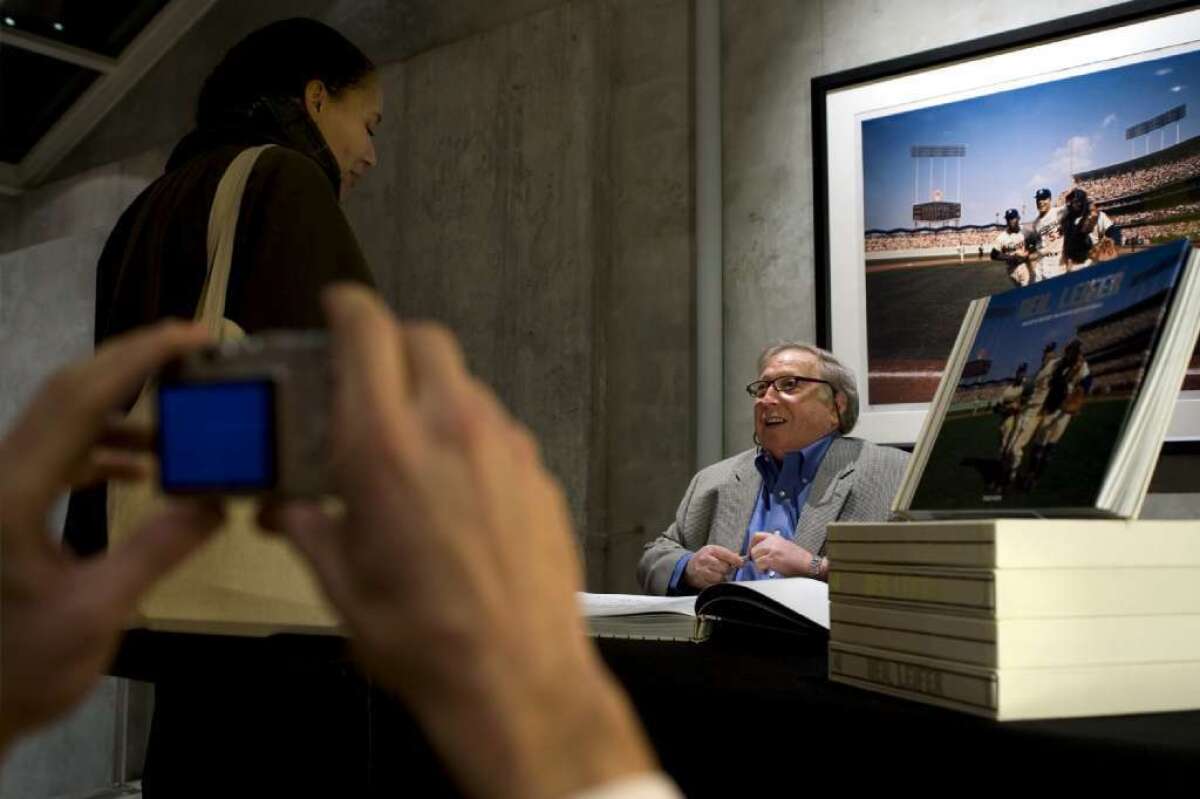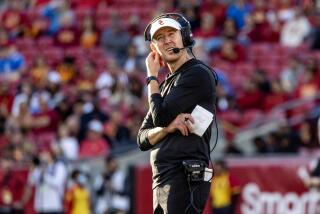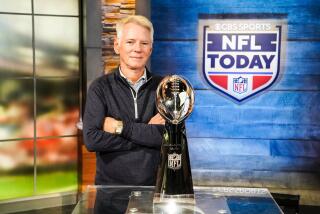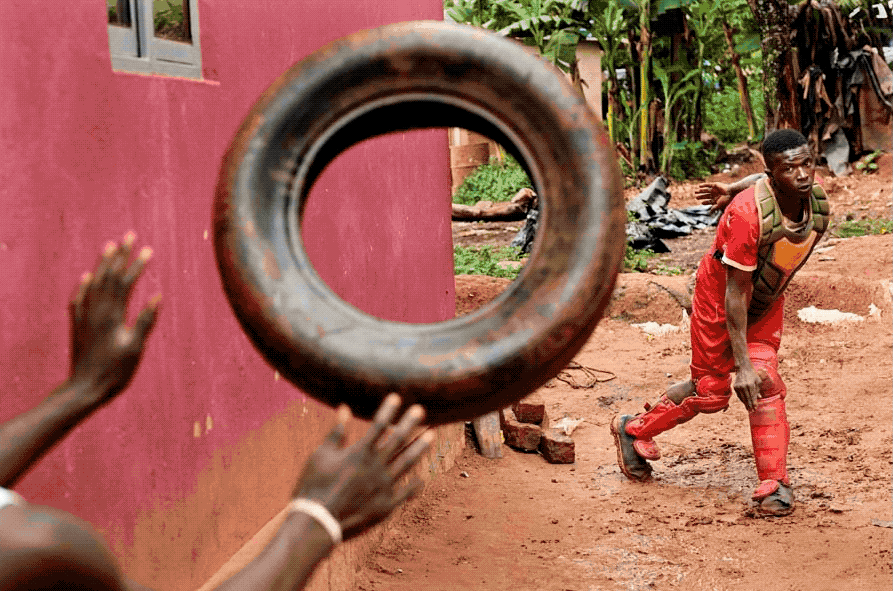Sports Q&A;: Neil Leifer

Neil Leifer has taken 170 photographs that have landed as the Sports Illustrated cover, and 40 more for Time Magazine.
His body of work includes legendary shots of a snarling Muhammad Ali standing over knockout victim Sonny Liston in 1965, and an innovative, classic photo from above of Ali raising his arms in triumph with a sprawled-out Cleveland Williams lying on the Astrodome canvas.
Leifer has documented the Olympics, Super Bowls, the Masters, the Kentucky Derby, World Series, and done portraits of sporting greats like Mike Tyson and Tiger Woods.
In recent years, Leifer, who’ll turn 70 in December, has turned to documentary film work, and his latest is a 38-minute short about a ventriloquist’s convention, “The ConVENTion,” that will screen through Thursday at 1 p.m. daily at the Laemmle NoHo 7, 5240 Lankershim Blvd., in North Hollywood.
Why this subject?
“I like eclectic subjects, like my ‘Portraits of a Lady’ about 25 artists painting the same subject, Sandra Day O’Connor, that was short-listed for an Academy Award. I had made a film about blind photographers and lectured it about on Crystal Cruises. The cruise director is a guy who’s a very skilled ventriloquist, and I’m old enough to remember Edgar Bergen, Paul Winchell, Shari Lewis. I was fascinated about an event that drew these people together. I was put in contact with the director of the convention in Fort Mitchell, Ky. They were initially leery, having been burned in being described as some weird oddballs. I was going to celebrate ventriloquists, not pass judgment. … I like the idea of doing something I know nothing about.”
I love how you got your start in sports photography, kindly volunteering to wheel in disabled people into the New York Giants’ stadium in lieu of a ticket, then snapping shots of games such as the greatest of all time, Colts-Giants, with your legendary shot of Alan Ameche scoring in 1958. It’s all about finding a way to access, isn’t it?
“It was my only way in. I couldn’t afford a ticket living in a low-income housing project on the east side. I took pictures of the Giants huddled on a bench in a snowstorm, and I brought coffee to the cops on the sidelines. Most of the guys who helped wheel everyone in would disappear into the stands, but I headed over to the end zone. I was thrilled to be on the field. And when the action came to my end with Ameche, there I was. Luck is important. Anyone who underestimates luck doesn’t get it.”
I know that contributed to you taking the shot of Ali standing over Liston, being on the right side of the ring, but you also took to innovation to get the Cleveland Williams shot?
“I’m often asked do I have a favorite picture, and the picture I’m most proud of is that one in the Astrodome. What motivates work work, as a writer too, is that every once in awhile you can say to yourself, ‘I nailed that one, I hit a grand slam,’ with your ego out there a little bit. … That was taken from a lighting rig about 80-foot-wide that they put up 75-to-80 feet high to not block the fans’ view. That allowed me to do something special.”
Yet, the Ali-Liston shot is considered the greatest sports photo of all time?
“When the fight happened, they put it on the fourth page. It didn’t get a top-three in the prestigious National Press Photographers Contest that year, or honorable mention. At the time, it was just a nice boxing picture. As time went on, as Ali became important, that picture became symbolic of the way people want to remember Ali. It took on a life of its own.”
You still see Ali. How’s he doing?
“I spent four days with him recently. He’s had Parkinson’s for 30 years. It’s very debilitating. It depends how his meds have kicked in, but he has a very hard time. He did not talk to me, but he sure the hell knows me. He was cooperative, and for a portion of any day, he’s fine. I think he might talk to his wife, but he’s frustrated with how difficult it is for people to understand him.”
I love watching the old NFL Films work of early Super Bowls. You were there. What do you most recall?
“Í can think of a gazillion pictures I took, but I also think of the one I missed. SI got great access to both teams in Super Bowl III and I had first choice of the team I wanted. Of course, I took the Colts. They were a prohibitive favorite, the game was going to be a disaster against the Jets. So I had all these great pictures of the Colts, of Earl Morral on the beach with his family, the big linemen playing shuffleboard. Johnny Unitas. But Walter Iooss had the Jets, and got that great shot of Joe Namath on the beach chair surrounded by reporters.”
What is your favorite sport to shoot?
“Boxing. Muhammad was maybe the greatest athlete of all time. His fights took us all around the world, beyond Madison Square Garden and Miami to Zaire, the Thrilla in Manila. I was ringside. Best fight I’ve ever seen. Don King had a party after and brought in just a few media guys. Myself. Jim Murray. Dave Anderson. Howard Bingham. Muhammad made you feel so special, he elevated everyone he came into contact with. He made a hero out of me.”
Twitter.com/latimespugmire
More to Read
Go beyond the scoreboard
Get the latest on L.A.'s teams in the daily Sports Report newsletter.
You may occasionally receive promotional content from the Los Angeles Times.











